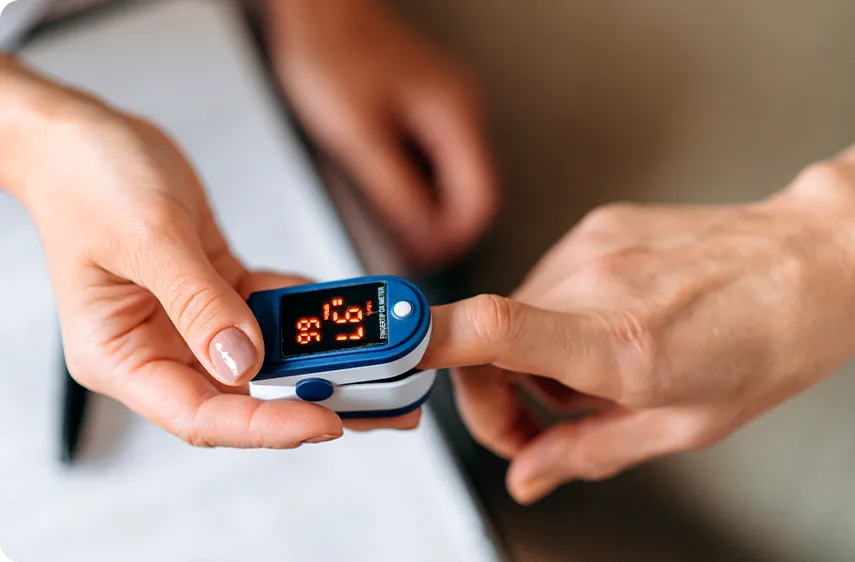Normal Oxygen Levels Explained: Do You Need an Oxygen Concentrator?
- Ain W.

- May 8
- 3 min read
Updated: May 9
Index:
🚁 Introduction
Oxygen is essential for life—but how do you know if you're getting enough? In Malaysia, especially after the COVID-19 pandemic, many people have become more aware of their oxygen levels and the use of oxygen concentrators at home. Whether you’re caring for an elderly parent, recovering from illness, or just monitoring your health, understanding normal oxygen levels is crucial.
This article explains what’s considered a healthy oxygen level, when to worry, and whether you might need an oxygen concentrator.
⭐ What Are Normal Oxygen Levels?
📊 Healthy Range
Normal SpO2 (blood oxygen saturation) levels range between 95% and 100%.
Levels between 91% and 94% are considered low and may require medical monitoring.
Anything below 90% is critical and often indicates a need for supplemental oxygen.
💡 How It’s Measured
Typically measured using a pulse oximeter (a small device clipped to your finger)
Non-invasive, painless, and results are available within seconds
⚠️ What Causes Low Oxygen Levels?
Chronic respiratory conditions (e.g., asthma, COPD)
Pneumonia or lung infections
Heart disease
COVID-19 complications
High altitudes or poor ventilation environments
🛎️ When Should You Use an Oxygen Concentrator?
🚑 Signs You May Need One:
SpO2 consistently below 94% at rest
Difficulty breathing during light activity
Fatigue, dizziness, or confusion
💡 Doctor’s Recommendation Is Key
Always consult a healthcare provider before using an oxygen concentrator
Improper use can lead to oxygen toxicity or worsen certain conditions
🏠 Home Use Cases
Post-COVID recovery
Elderly patients with respiratory issues
Palliative care for chronic illnesses
🔋 Types of Oxygen Concentrators Available in Malaysia
There are different models of oxygen concentrators depending on your needs:
🏠 Home Oxygen Concentrators
Designed for stationary use
Higher flow rates for continuous therapy
Require a stable power source
🧳 Portable Oxygen Concentrators
Lightweight and battery-operated
Suitable for travel or mobile users
May have pulse or continuous flow settings
Choose based on your mobility, oxygen requirements, and doctor’s advice.
🤔 Did You Know?
The World Health Organization (WHO) recommends oxygen therapy as a life-saving treatment for severe COVID-19 and pneumonia. Portable oxygen concentrators are now available for home use across Malaysia.
☑️ Tips for Monitoring Your Oxygen Level at Home
Use a reliable pulse oximeter (preferably with CE or FDA certification)
Check levels in a sitting or resting position
Avoid cold fingers and nail polish for accurate readings
Record results daily if under doctor supervision
📆 Conclusion
Understanding your oxygen levels is a vital step in managing your respiratory health. If you or a loved one frequently falls below the normal SpO2 range, speak to a healthcare provider. An oxygen concentrator may help, but it should never be used without proper guidance.
Take a breath—monitor, consult, and care responsibly.
🤝 FAQs
1. What is a normal oxygen level for a healthy person?
Between 95% and 100% SpO2 is considered normal for most healthy individuals.
2. When is oxygen considered too low?
Anything below 90% is considered dangerous and requires immediate medical attention.
3. Can I buy and use an oxygen concentrator without a prescription?
While it’s possible to buy one, it’s strongly recommended to consult a doctor before using it.
4. What’s the difference between an oxygen tank and a concentrator?
Oxygen tanks store compressed oxygen, while concentrators filter and deliver oxygen from ambient air.
5. How often should I check my oxygen level at home?
If advised by your doctor, check daily—especially if you have respiratory issues or are recovering from illness.
🌟 Looking for a Reliable Oxygen Concentrator in Malaysia?
We offer portable and home-use oxygen concentrators for post-COVID care, elderly support, and more. Certified quality with local delivery.



















Comments